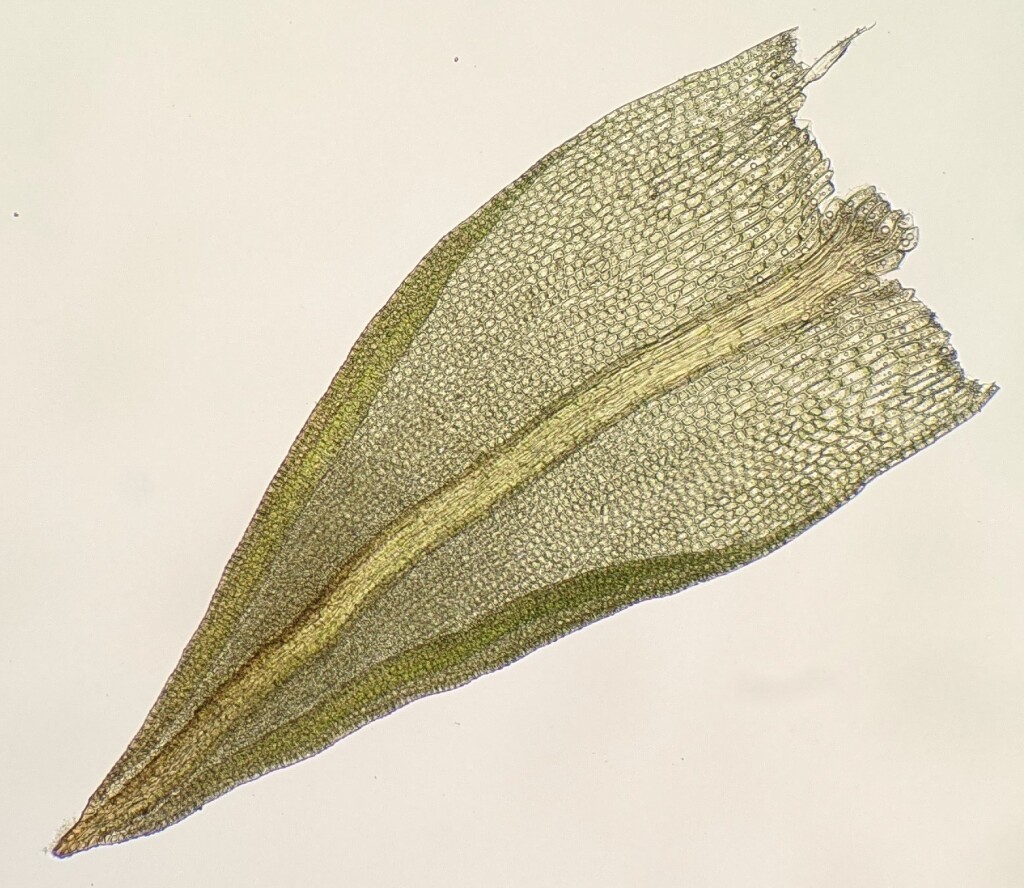Gertrudiella
Dioicous. Asexual reproduction by gemmae on branched stalks in leaf axils or by rhizoidal tubers. Turves on soil or rocks. Stem simple or branched, glabrous or with sparse rhizoids; central strand present; hyalodermis absent; sclerodermis present. Leaves ovate to lanceolate or oblong (not in Victoria), erect- to wide-spreading or squarrose (not in Victoria) when moist, spiralling around stem when dry; apex rounded (not in Victoria), obtuse (not in Victoria), acute or acuminate; costa subpercurrent (not in Victoria), percurrent or short-excurrent, with quadrate to elongate adaxial superficial cells, with a differentiated adaxial epidermis forming a pad, lamellae (not in Victoria) or filaments (not in Victoria), without an adaxial stereid band, without a hydroid strand, with an abaxial stereid band, with a differentiated abaxial epidermis, with quadrate to elongate abaxial superficial cells; margin entire, recurved or revolute, without a border; laminal cells quadrate, subquadrate or hexagonal, smooth or uni- or pluripapillose, with simple or bifurcate (not in Victoria) papillae, unistratose or rarely irregularly bistratose at margin near apex (not in Victoria), with orange or red KOH reaction, gradually transitioning into rectangular, smooth basal laminal cells, sometimes scarcely differentiated. Acrocarpous. Capsule erect, straight or slightly curved, ellipsoid to cylindric, exserted, operculate, with an annulus. Calyptra cucullate. Operculum conic or rostrate. Peristome of 16 straight (not in Victoria) or twisted teeth, split to near base into two filaments.
16 species mostly from South America from Ecuador south to Argentina and Chile, but also Antarctica, South Africa, the USA, New Zealand and Australia; one species in Victoria.
Gertrudiella in the broad circumscription adopted here is expanded to encompass several species formerly placed in Didymodon, including the Victorian D. torquatus (Taylor) Catches., and the Andean genus Andinia. These mosses form a lineage in phylogenies of combined chloroplast and nuclear sequences that is closely related to other lineages of a broadly defined Didymodon (Jiménez et al. 2021). As such, Gertrudiella forms one of the genera that Didymodon has been separated into to restore monophyly of Didymodon (also see Geheebia profile).
 Spinning
SpinningJiménez, J.A.; Cano, M.J.; Guerra, J. (2021). A multilocus phylogeny of the moss genus Didymodon and allied genera (Pottiaceae): Generic delimitations and their implications for systematics. Journal of Systematics and Evolution.
